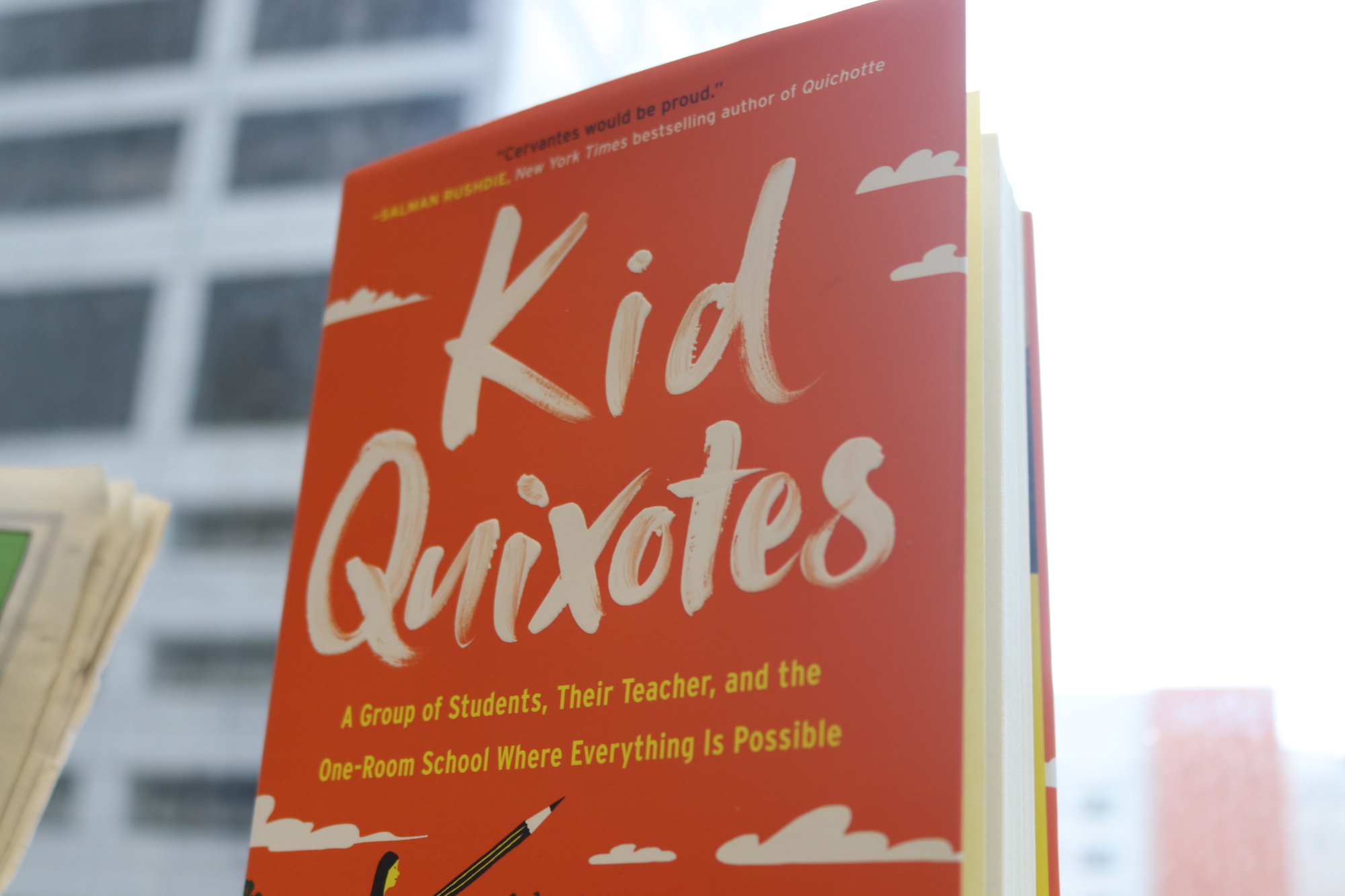
Stephen Haff, writer of “Kid Quixotes” shares the story of his classroom in Brooklyn
Kid Quixotes: A group of Students, their Teacher, and the one-room school where everything is possible By Stephen Haff
Stephen Haff is the author of Kid Quixotes.
When he embarked on his journey as a teacher, Haff told AL DÍA that he quickly realized his privilege, noting his upbringing was sheltered. As soon as he embarked on his teaching career, he said he knew the norm wouldn’t be enough.
“I thought I wasn’t really contributing to the place I lived in the way that I wanted to,” Haff noted.
“I had such a sheltered, narrow upbringing, so this was all new to me. That people were struggling this way, that they were suffering. And it made me really upset,” he continued.
“And I thought, how can people treat other people this way? So I wanted to do something to help.”
He decided to go somewhere where the need for teachers is dire, and landed in Bushwick, Brooklyn, a community with a high BIPOC population that struggles with high poverty rates.
Haff describes the school as having a “challenging energy,” but the dispositions and personalities of the students inspired him even further.
“I thought they were hilarious, and so, so smart,” he said.
He taught there for seven years, and said he soon burnt out. “There’s so much stress and so much pressure,” Haff said, to adhere to rules that he didn’t believe in.
Still, he wanted to keep teaching in a way that was safe and healthy for the kids.
He found a classroom space he could rent in the community, so kids could continue learning in their neighborhoods for free. Slowly, Haff says more and more students enrolled, soon accruing a 200-person waitlist.
“Telling your story and having someone listen to your story,” Haff says, is something that has increasing value as time goes on. Not only as a society but for mental health, too.
Now, since 2016, Haff and his students have been collectively translating Don Quixote into English with the help of dozens of dictionaries and even a translator.
They are adapting the centuries-old Spanish masterpiece into a bilingual musical based on their own lives.
The story is filled with the kid’s stories as much as it is the inspiring journeys of the two iconic characters of the novel —and it works exceptionally well.
Haff says it’s because the heroes — Quixote and Panza — are immersed in a tale that is both deeply comical and tragic.
“The kids are drawn to the comedy of it.” Haff says.“It’s a comedy of resilience.”
No matter how many times the heroes are lying on their back, they always get back up, beaten-up and bruised and get back on their horse and donkey.
He says kids are like that. Kids bounce back.
“They can take the pressures of school, the stress of poverty, and the pain of racism. And then they can consider those things, and the next moment they can laugh,” said Haff.
RELATED CONTENT
Don Quixote seemed perfect for a group of kids, he says, because it’s a story of two people pretending, which is probably the favorite pastime for most children.
It’s able to be understood, to children, in a way that may be baffling for older readers. There’s a deep sense of sadness that adults immediately pick-up on in the novel, but for kids, it’s about believing.
Those windmills are giants, that basin is a knight’s helmet.
“Everyone listens to everyone” in Haff’s classroom , and that is the mindset he asks of the readers of Kid Quixotes.
“I want people to get to know the characters in the book, who are actually real people, and then they just can’t hold on to their bias anymore,” he said.
Due to COVID-19, Haff’s classes have moved virtually. He has had to let go of his classroom space, but says that even so, he is not going to ask kids to come to the classroom during a healthcare crisis.
For now, Zoom is the way to go, but it’s not the same, Haff says.
“I miss them terribly, and they miss the collective experience of the school,” Haff said, adding many children consider the experience to be a part of their childhood, and because of COVID-19, they feel they are missing out.
Then Haff had an idea — an attempt to manifest some semblance of the class experience into the physical world.
“I asked all the kids to tell me a story. I sent them inside an envelope with my address and stamp and all. All they had to do was write their story, and send it back,” he said.
Some of the responses he has received so far are more powerful than a Zoom call, more meaningful. Some even brought him to tears.
It was a sign that this is only a moment in their history, and they will return to the classroom soon.
“It was so powerful,” said Haff. “We are carrying on in meaningful ways.”










LEAVE A COMMENT: